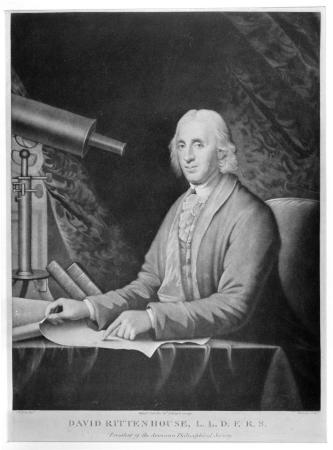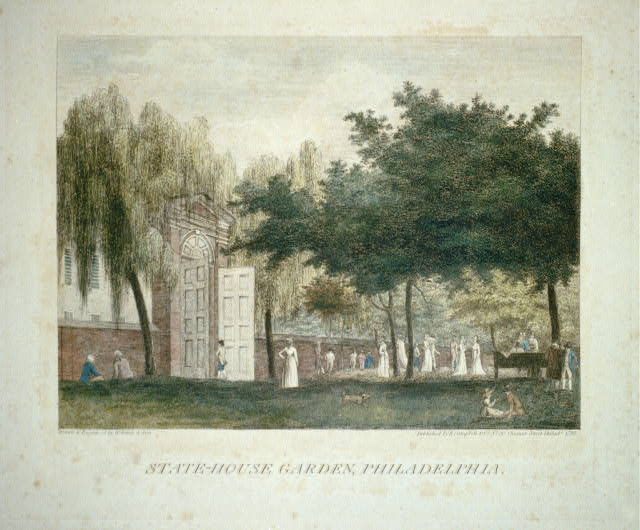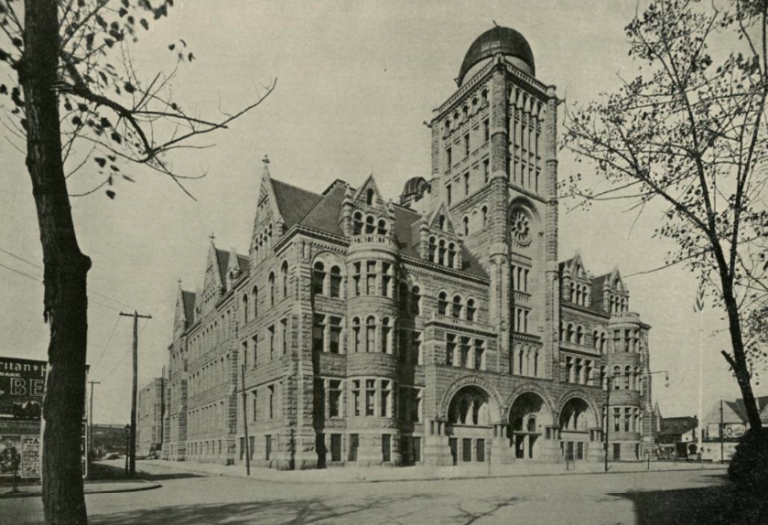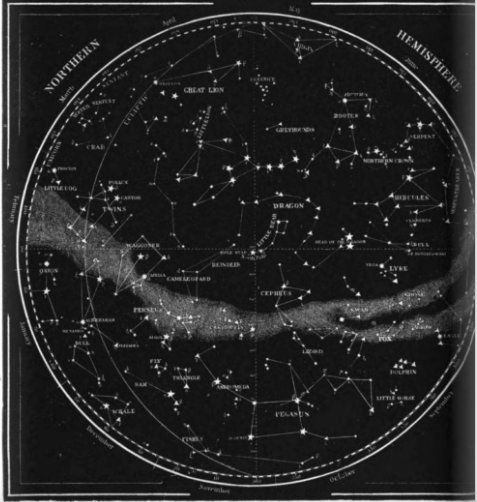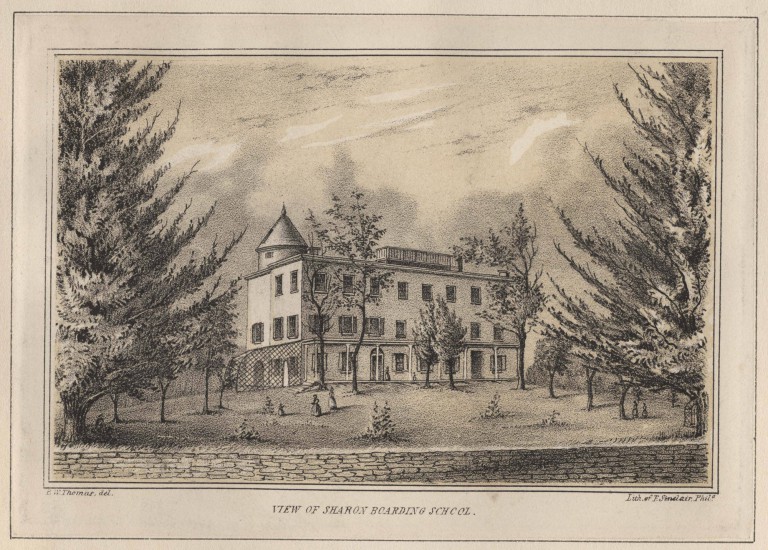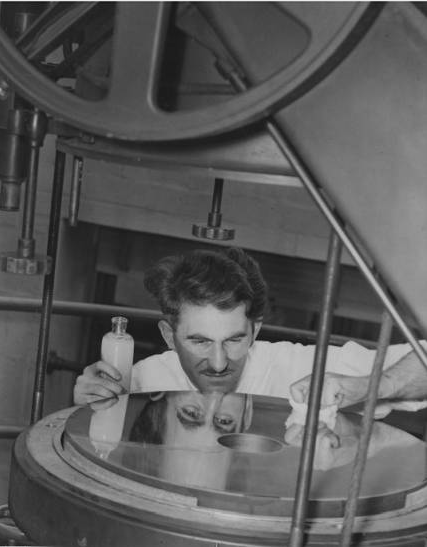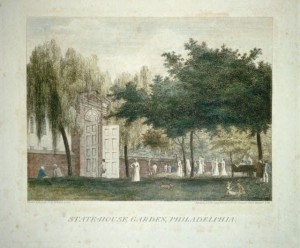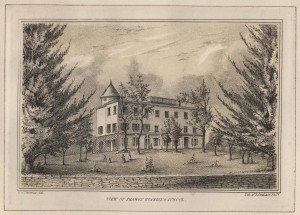Astronomy
Essay
Philadelphians embraced the study of celestial phenomena and bodies, such as stars, planets, and comets, from an early date. As early as 1769, the American Philosophical Society’s involvement in tracking that year’s transit of Venus gained transatlantic scientific attention. Astronomy remained a popular scientific pursuit throughout the region’s history; the Franklin Institute and Rittenhouse Astronomical Society continued to generate local interest in the science in the twenty-first century.
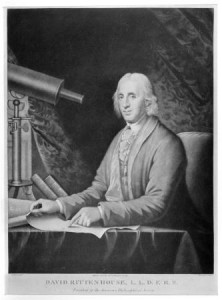
Eighteenth-century almanacs contained various kinds of astronomical data, including schedules of eclipses and sunrise/sunset tables. Some of the more popular Philadelphia imprints included Poor Richard’s Almanack, printed by Benjamin Franklin (1706–90), and Der Hoch-Deutsch Americanische Kalender, printed by Germantown’s Christopher Saur (1693–1758). Almanacs commonly included a Zodiac Man or Man of Signs, an astrological diagram that showed how planets governed specific parts of the human body. Historically, though the practice was on the decline by the eighteenth century, the image was intended to be used in conjunction with the almanac’s astronomical data to diagnose illnesses. However it was used, the relevancy of astronomical information in almanacs was contingent upon one’s geographical location, prompting local residents, notably David Rittenhouse (1732–96), to provide almanac calculations for the vicinity of Philadelphia.
David Rittenhouse was a celebrated early American astronomer whose work on the 1769 transit of Venus brought him transatlantic fame. A transit of Venus occurs when the orbit of Venus passes between the sun and the earth, a rare though predictable phenomenon that occurs twice separated by a gap of roughly eight years after a longer gap of over one hundred years. Not to miss a literal once-in-a-lifetime opportunity, the American Philosophical Society organized a committee consisting of Rittenhouse, William Smith (1727–1803), John Lukens (1720?–89), and John Sellers to take observations in Norriton, near Rittenhouse’s home. A second observatory was constructed in the State House Garden. The Royal Society of London published Rittenhouse’s delineation of the transit, and the American Philosophical Society released an account of the committee’s doings in the first issue of its Transactions, in 1773. This work was met with approval from European scientists. Rittenhouse supplied local astronomers, often using his mechanical talents to make complex and beautiful astronomical instruments. In addition to crafting some of the equipment for the observatories at Norriton and the State House, he made two orreries, mechanical devices for studying the movement of planets, for the College of New Jersey in 1770 and the University of Pennsylvania in 1771.
School Observatories
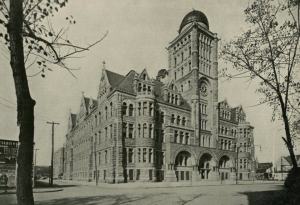
Local colleges and universities maintained a number of impressive observatories between the eighteenth and twenty-first centuries, but a Philadelphia city high school became one of the most technologically advanced institutions in the country in 1837. The city set aside $50,000 for the establishment of Central High School, which included $10,000 to build and furnish an astronomical observatory and library. Sharon Female Academy, founded by John Jackson (1809–55) in nearby Darby, seeking to emulate Central High, acquired a similar observatory and telescope.
Use of telescopes was not exclusive to observatories. Popular speakers used telescopes to teach astronomy in lyceum halls. In the 1840s, Irish lecturer Dionysius Lardner (1793–1859) offered his take on the theory of “The Plurality of Worlds,” an early argument for extraterrestrial life, while traveling through Philadelphia. The argument posited that if God had made other planets, they must be inhabited. Through Lardner’s performances telescopes became a means of visualizing intelligent design.
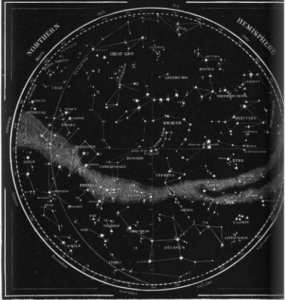
Popular thirst for astronomical knowledge, coupled with school curricula, encouraged local markets for textbooks and scientific instruments. Ezra Otis Kendall (1818–99), who taught at Philadelphia High School, authored Uranography and Atlas of the Heavens, which appeared in various editions in the 1840s and 1850s. The latter contained maps of stars and constellations. Kendall preferred color-printed star charts that depicted white stars on a blue field because he felt this better represented the nature of the heavens, Kendall’s charts also eschewed fanciful representations of constellations that confused his students. Fellow Philadelphian, Henry Whitall (1819–87), in Treatise on Fixed Stars (1850), followed suit. Testimonials for Whitall’s charts suggest that they were used by pupils of various ages, male and female alike. Women, too, wrote astronomy texts. Hannah M. Bouvier (1811–70), a resident of Crosswicks, New Jersey, wrote her Familiar Astronomy, a Philadelphia imprint, in 1855. The fifth part of her work dealt with practical astronomy, or the use of astronomical instruments. Philadelphians could visit local manufacturing companies, including McAllister & Brothers and James W. Queen & Co. These companies made telescopes, celestial globes, and various astronomical tools and glass lenses. In the 1870s and 1880s, James W. Queen & Co. advertised Henry Whitall’s “Moveable Planispheres,” large printed or brightly painted paper disks that could be rotated to determine visible stars for a particular time and date.
Other Astronomical Societies
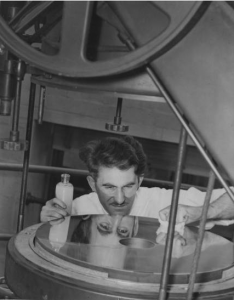
Philadelphia’s culture of astronomy spawned a number of popular astronomical societies in the late nineteenth and twentieth centuries. In 1888, residents of Philadelphia and Camden met in New Jersey to found the Camden Astronomical Society, one of the oldest amateur astronomy clubs in the country. Edmund Read Jr. (1859–1923), a Camden businessman, became its first president. For the first thirty-five years, the society held its meetings at Read’s house. In 1927, it became the Rittenhouse Astronomical Society, meeting at the Sproul Observatory, built in 1906, at Swarthmore College. Newly renamed, the society, with the cooperation of the Historical Society of Pennsylvania, American Philosophical Society, and other area institutions, did much to promote the bicentennial of Rittenhouse’s birth in 1932, including establishing the Rittenhouse Medal, an award for outstanding achievement in astronomy. When the Franklin Institute opened a museum on the Benjamin Franklin Parkway, the society began to meet there, taking advantage of the new Fels Planetarium and Institute Observatory. Other local societies included the West Jersey Astronomical Society (founded 1967) and student-run societies at colleges and universities, such as the Physics and Astronomy Club at the University of Pennsylvania.
Well-established scientific institutions ushered in popular interest in astronomy, too. In the late twentieth century, Derrick Pitts (b. 1955) transformed the Franklin Institute’s astronomical programs. Pitts began working at the Franklin Institute as a college student in 1978 and became chief astronomer in 1990. Pitts was influential in creating the “Space Command” permanent exhibit, which provided children a hands-on experience with astronomical artifacts. In 2004, Science Spectrum magazine named Pitts one of the fifty most important African Americans in research science. In 2008, Pitts became the host of SkyTalk on WHYY Radio, a weekly broadcast of astronomical news made accessible for a popular audience. He became a NASA Ambassador in 2009. Pitts, the Franklin Institute, and the Rittenhouse Astronomical Society held various educational astronomy events during the Annual Philadelphia Science Festival, including a citywide telescope night.
Between the eighteenth and the twenty-first centuries, Philadelphians maintained a steady interest in astronomy. Scholars and popular practitioners looked to the sky to answer various questions—medical, religious, philosophical, and scientific—all means of finding their place in the universe.
Jessica Linker is a doctoral candidate at the University of Connecticut, Storrs, and the recipient of fellowships from a number of Philadelphia-area institutions, including the Library Company of Philadelphia, the American Philosophical Society, and the McNeil Center for Early American Studies. Her work focuses on American women and scientific practice between 1720 and 1860. (Author information current at time of publication.)
Copyright 2016, Rutgers University
Gallery
Backgrounders
Connecting Headlines with History
- Penn State researchers to share in extraordinary view of space (WHYY, June 12, 2012)
- Finding our galaxy's most distant stars (WHYY, November 13, 2014)
- Working from their couches, amateur astronomers make real scientific contributions (WHYY, February 19, 2015)
- Princeton Plasma Physics Lab offers 'Science on Saturday' lecture series (WHYY, January 9, 2106)
- Villanova astronomer on a mission to get a much closer look at red giants (WHYY, March 14, 2016)
Links
- The Transit of Venus Starts Here (Hidden City Philadelphia)
- The Rittenhouse Orrery (ExplorePAHistory.com)
- Rittenhouse Farm Historical Marker (ExplorePAHistory.com)
- SkyTalk (WHYY)
- Derrick Pitts, Hon. D (Franklin Institute)
- Fels Planetarium (Franklin Institute)
- David Rittenhouse Laboratory (University of Pennsylvania)
